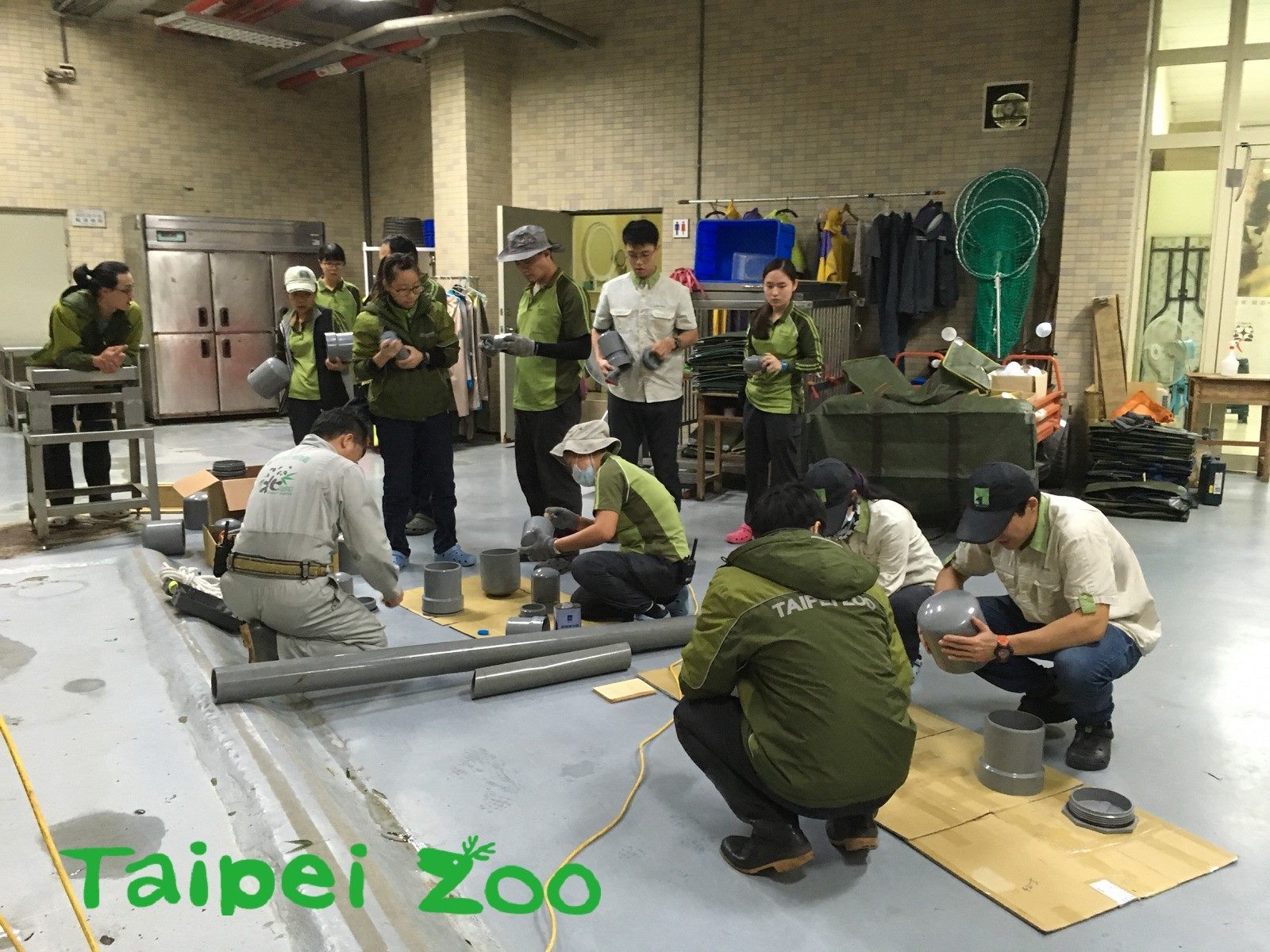Care Workers Produce Handmade Toys – Zoo Animals Receive Surprise Christmas Gifts
 Taipei Zoo recently launched the Animal Toys DIY Class, where care workers from various areas of the zoo can come together to discuss how to make toys for their animals. The class is spearheaded by toy DIY experts from the Giant Panda House, sharing their years of experience in toy-making with the colleagues through live demonstration, hoping that animals from different areas in the zoo will receive their own Christmas gift in time.
Taipei Zoo recently launched the Animal Toys DIY Class, where care workers from various areas of the zoo can come together to discuss how to make toys for their animals. The class is spearheaded by toy DIY experts from the Giant Panda House, sharing their years of experience in toy-making with the colleagues through live demonstration, hoping that animals from different areas in the zoo will receive their own Christmas gift in time.
Children like to play with toys, and zoo animals under the care of care workers also love new toys! Care workers often have to rack their brains to prepare behavioral enrichment toys that are able to evoke their innate behavior and attract their attention. Animals come in all shapes and sizes; therefore, their characteristics and behavior models are also different, these are factors that must be taken into consideration when designing and making the toys.
The first toy class mainly involves making toys out of PVC pipes. Since PVC pipes are used for our water mains, the material is safe for the animals, even if their food is placed inside it. Another reason for using PVC pipes is that they are available in numerous sizes, thickness, and shapes, perfect for designing toys for different types and sizes of animals. Also, PVC material is harder and more durable. Of course, the animals’ first impression of the toys is crucial because if the food does not come out easily, they will lose confidence in the toy after repeated failures, and they will not be tempted to try new toys the next time. On the other hand, if the toy is too simple and does not present a challenge to the animals, they will lose interest in the toy. Consequently, there is a ton of detail involved in making toys exclusively for animals.
The course involves care workers of animals such as gorillas, raccoons, meerkats, and otters, where everyone brainstormed to devise the best possible solutions for their animals. Since the animals come in considerably different shapes and sizes, and their eating habits also vary significantly, the care workers therefore all engaged in enthusiastic discussions. The gorilla care workers asked if it is possible to produce a toy for gorillas, but since making gorilla toys out of PVC is extremely difficult due to their size, the process is also relatively more time-consuming. In light of this, care workers from the Giant Panda House gave the newlywed gorillas a giant toy as a Christmas gift and hoped that the gorillas would love it.
Animals surviving in the wilderness must be prepared to take on all sorts of challenges, fight for territory, and forage for food, and they are constantly on the lookout for attacks by predators, etc. However, animals in the zoo enjoy a safe, clean environment cleaned by dedicated zoo staff every day, who also prepares balanced diet for them, and they are protected from their natural enemies. Sometimes, however, zoo animals exhibit physical and mental problems due to boredom, therefore the care workers must think of ways to enrich their behavior by enticing them to explore, forage, and play, in turn allowing them to demonstrate their innate behaviors. When you come to the zoo next time, make sure to observe the animals’ reactions towards the behavioral enrichment toys!
Taipei Zoo: http://www.zoo.gov.tw/
Facebook: http://www.facebook.com/TaipeiZoo
YouTube: http://www.youtube.com/TaipeiZoo

![Taiwan.gov.tw [ open a new window]](/images/egov.png)
